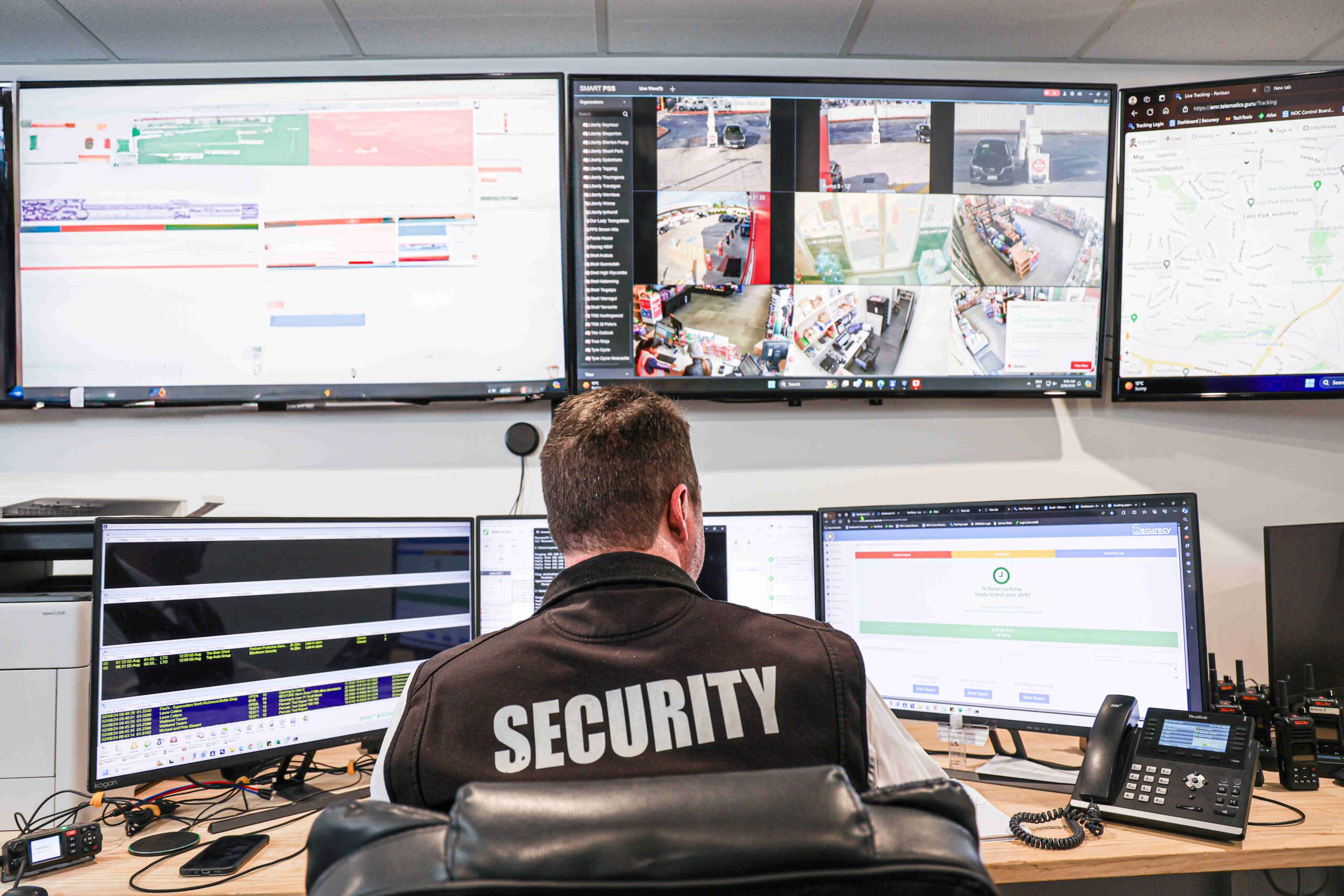What to Expect From a Back to Base Security Alarm Setup
In an age where security is paramount, a back to base security alarm system offers a reliable solution for protecting homes and businesses. This article delves into what one can expect from such a setup, outlining its features, benefits, and the overall process involved in installation and monitoring.
Understanding Back to Base Security Alarms
A back to base security alarm system is designed to provide continuous monitoring of your property by connecting your alarm system directly to a central monitoring station. This ensures that any alerts triggered by the alarm are responded to promptly, enhancing the safety of the premises.
How It Works
The core functionality of a back to base alarm system revolves around a series of sensors placed strategically throughout the property. These sensors detect intrusions, smoke, or other emergencies. When an alarm is triggered, the system sends a signal to the monitoring station, where trained professionals assess the situation and take appropriate action.
This immediate response can include notifying the police, fire department, or emergency contacts, ensuring that help is dispatched without delay. The seamless integration of technology and human oversight makes back to base systems a robust choice for security. Furthermore, many modern systems are equipped with advanced features such as video surveillance and remote access, allowing homeowners to monitor their properties in real-time from their smartphones or tablets. This level of accessibility not only enhances security but also provides users with the ability to check in on their homes while away, offering an additional layer of reassurance.
Key Components
Several essential components make up a back to base security system. These typically include:
- Control Panel: The central hub that communicates with all sensors and the monitoring station.
- Sensors: Devices that detect motion, glass breakage, smoke, or carbon monoxide.
- Keypads: Used for arming and disarming the system, often featuring user-friendly interfaces.
- Communication Devices: These include landline connections, mobile networks, or internet connectivity to relay alarm signals.
Each component plays a critical role in ensuring the system operates effectively, providing peace of mind to users. Additionally, many systems now incorporate smart technology, enabling integration with home automation devices. This means that security alarms can work in tandem with smart locks, lighting systems, and even thermostats, allowing for a comprehensive approach to home security and energy efficiency. As technology evolves, so too do the capabilities of back to base security systems, making them an increasingly attractive option for homeowners looking to safeguard their properties.
Benefits of a Back to Base Security Alarm
Investing in a back to base security alarm system comes with numerous advantages that can significantly enhance the security of any property.
24/7 Monitoring
One of the most significant benefits is the round-the-clock monitoring provided by professional security personnel. This constant vigilance means that any alarm triggered, regardless of the time of day, receives immediate attention. In contrast to self-monitored systems, which rely on the property owner to respond, back to base systems ensure that trained professionals are always on hand to act swiftly.
Deterrent to Criminal Activity
The presence of a back to base security alarm can act as a powerful deterrent to potential intruders. Knowing that a property is under constant surveillance and that any alarm will be promptly addressed can discourage criminal activity. Many insurance companies also recognise this, often offering reduced premiums for properties equipped with professional monitoring systems.
Peace of Mind
Perhaps the most invaluable benefit is the peace of mind that comes with knowing your property is protected. Whether at home or away, individuals can rest assured that their security system is actively monitoring for threats, allowing them to focus on other aspects of their lives without the constant worry of potential intrusions.
Moreover, the integration of smart technology into back to base security systems enhances this peace of mind. Many modern systems allow homeowners to access live feeds from security cameras via their smartphones, enabling them to check on their property remotely. This feature is particularly beneficial for those who travel frequently or spend long hours away from home, as it provides an additional layer of reassurance that they can monitor their surroundings at any time. Furthermore, some systems can send instant alerts to the homeowner’s device, ensuring that they are always informed of any unusual activity.
Emergency Response Coordination
Another crucial advantage of back to base security alarms is the coordination with local emergency services. In the event of a verified alarm, security personnel can quickly contact the police or fire department, ensuring a rapid response to any potential threat. This level of professional intervention can be critical in preventing damage or loss, as the quicker the response, the better the chances of apprehending intruders or mitigating emergencies. Such a system not only protects the property but also contributes to the safety of the surrounding community, fostering a sense of collective security among neighbours.
The Installation Process
Setting up a back to base security alarm system involves several steps, each crucial for ensuring the system operates effectively. Understanding this process can help demystify what to expect during installation.

Initial Consultation
The first step typically involves an initial consultation with a security professional. During this meeting, the security needs of the property are assessed, and a tailored solution is proposed. Factors such as the size of the property, the number of entry points, and specific security concerns are taken into account to design a system that meets the client’s requirements.
Installation Day
On the day of installation, a team of trained technicians will arrive to set up the system. This process usually involves:
- Installing sensors in key locations around the property.
- Setting up the control panel and communication devices.
- Testing the entire system to ensure all components are functioning correctly.
Following installation, the technicians will provide a comprehensive demonstration of how to operate the system, ensuring that users are comfortable with arming and disarming the alarm as well as understanding the various alerts and notifications.
Post-Installation Support
Once the system is installed, ongoing support is typically provided. This may include regular maintenance checks, software updates, and customer service assistance. Many security companies also offer training sessions to ensure users are fully equipped to manage their systems effectively.
Monitoring Options
When it comes to monitoring a back to base security alarm system, there are several options available, each catering to different needs and preferences.
Professional Monitoring
Professional monitoring is the most common choice for back to base systems. This involves a dedicated team of security professionals who monitor alarm signals 24/7. In the event of an alarm, they will assess the situation and take appropriate action, such as contacting emergency services or notifying the property owner.
Self-Monitoring
Some systems allow for self-monitoring, where property owners receive alerts directly to their smartphones or devices. While this option can be more cost-effective, it requires the owner to be vigilant and responsive to alerts, which may not be feasible for everyone.
Hybrid Monitoring
A hybrid approach combines both professional and self-monitoring. In this setup, the system can alert the property owner while also notifying a monitoring station. This offers the best of both worlds, providing immediate alerts to the owner while ensuring professional oversight is available if needed.
Costs Involved
Understanding the costs associated with a back to base security alarm setup is crucial for anyone considering this investment. While prices can vary significantly based on the complexity of the system and the level of monitoring chosen, a few key factors influence overall costs.
Initial Setup Costs
The initial setup costs typically include the purchase of equipment, installation fees, and any necessary wiring or infrastructure modifications. Depending on the size of the property and the number of sensors required, these costs can range from a few hundred to several thousand dollars.
Monthly Monitoring Fees
In addition to the initial costs, ongoing monthly monitoring fees should be considered. These fees can vary based on the level of service provided, with professional monitoring generally costing more than self-monitoring options. However, the peace of mind that comes with professional oversight often justifies the expense for many property owners.
Potential Savings
While the upfront and ongoing costs may seem significant, it is essential to consider potential savings. Many insurance companies offer discounts on premiums for properties with professionally monitored alarm systems. Over time, these savings can offset the costs of installation and monitoring, making it a financially sound investment.

Conclusion
A back to base security alarm setup represents a proactive approach to safeguarding property and ensuring peace of mind. With 24/7 monitoring, immediate response capabilities, and a range of customisable options, these systems are designed to meet the diverse needs of homeowners and businesses alike.
Understanding the installation process, monitoring options, and associated costs can empower individuals to make informed decisions about their security needs. In a world where safety is paramount, investing in a back to base security alarm system is a step towards a more secure future.
See Also: Understanding the alarm response process in monitored security systems.


